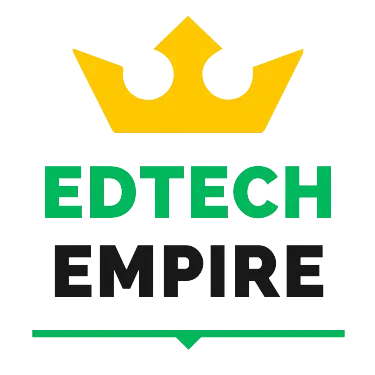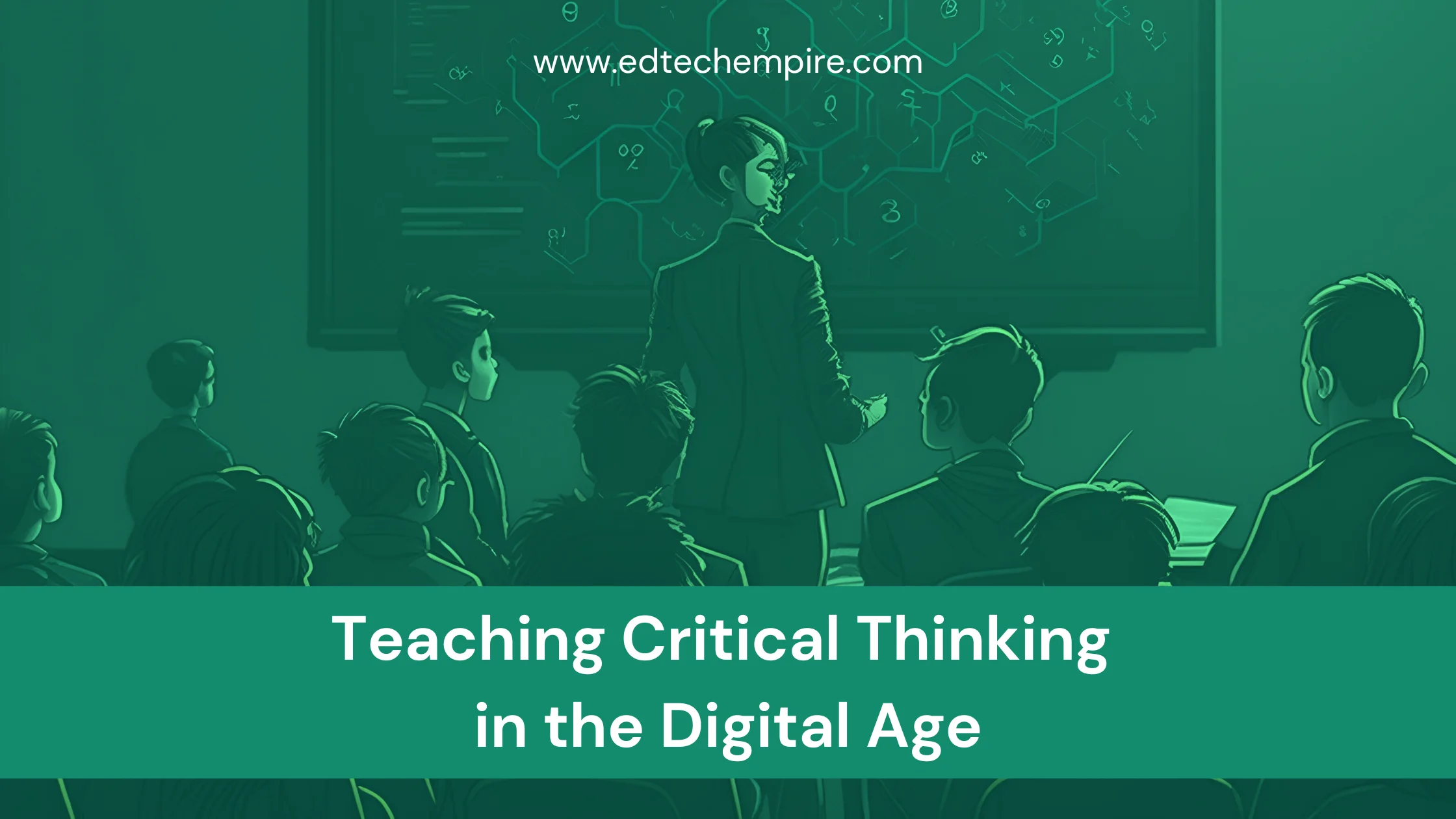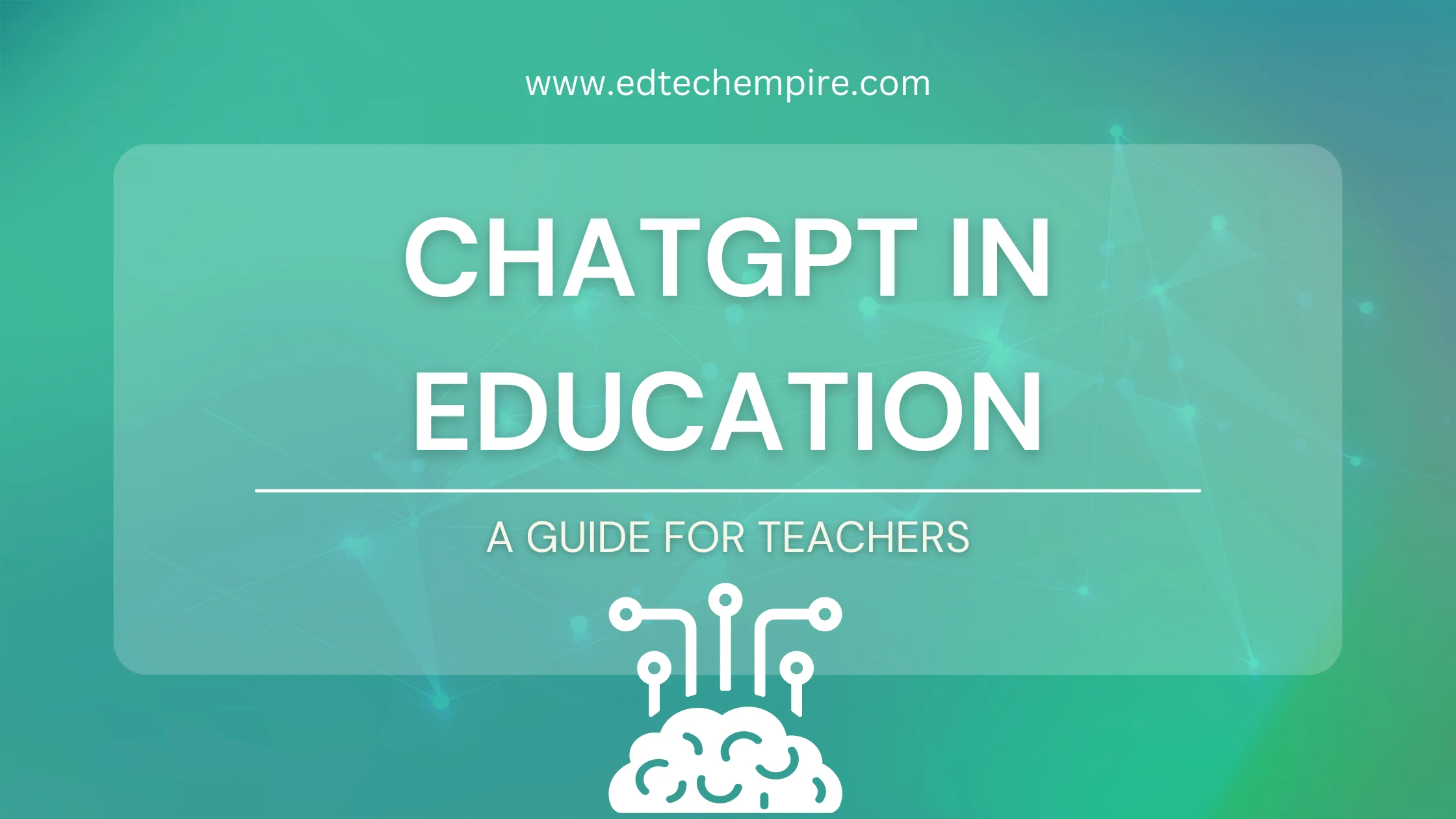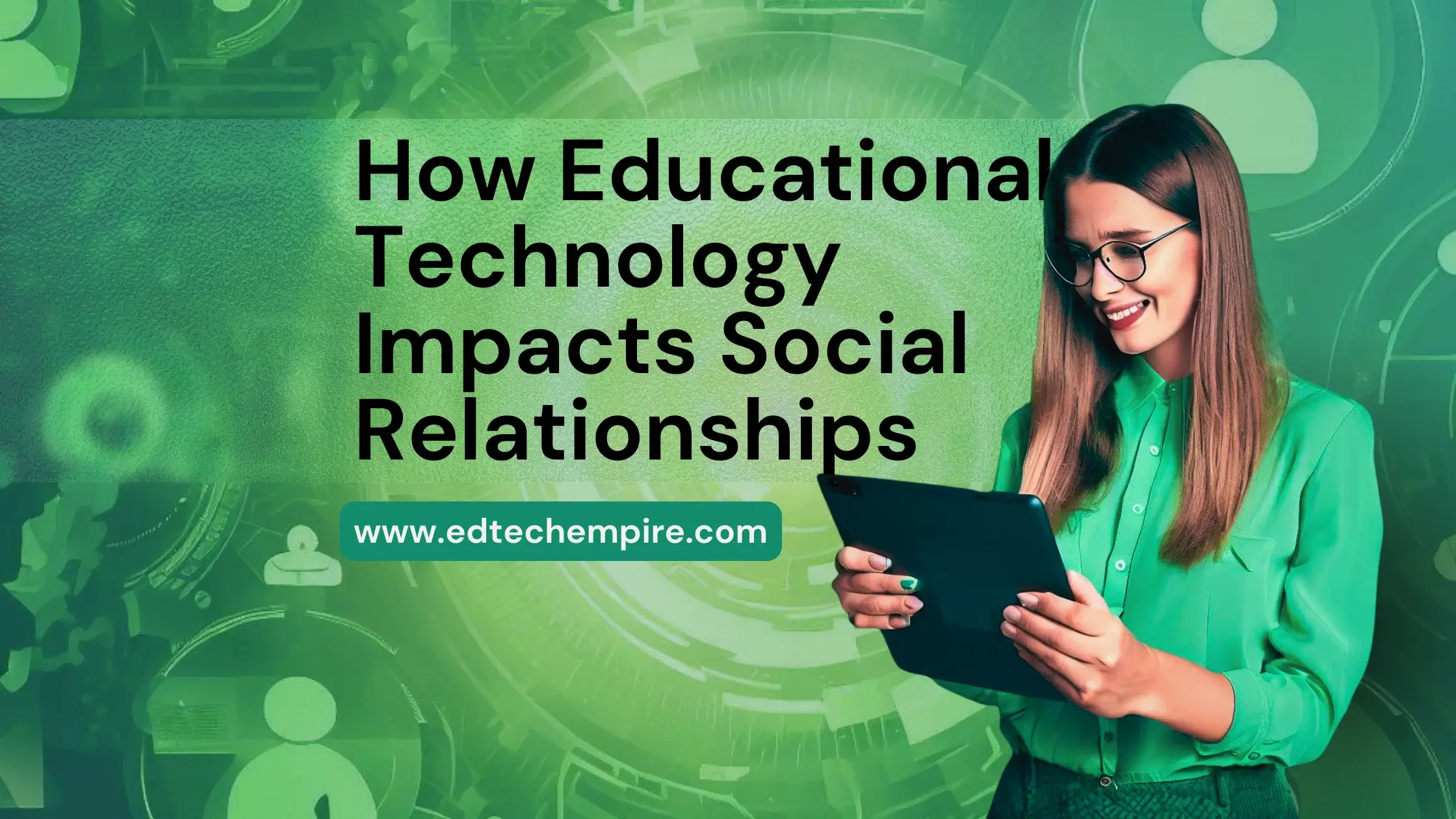![]()
As technology becomes increasingly integrated into our daily lives, it is important to recognize its impact on education. The digital age presents both opportunities and challenges for educators, particularly when it comes to teaching critical thinking. In this blog post, we will explore the art of teaching critical thinking in the digital age and discuss some strategies for incorporating technology into the classroom.
Table of Contents
- Understanding Critical Thinking
- The Importance of Critical Thinking
- Challenges of Teaching Critical Thinking in the Digital Age
- Is technology producing a decline in critical thinking and analysis?
- How critical thinking is important to media and digital literacy?
- Strategies for Teaching Critical Thinking in the Digital Age
- 1. Encourage Questioning
- 2. Use Educational Technology
- 3. Incorporate Gamification
- 4. Teach AI Prompt Engineering
- 5. Incorporate Technology into Lesson Plans
- 6. Encouraging Active Engagement with Digital Media
- 7. Teaching the Art of Questioning
- 8. Encouraging Independent Research
- 9. Fostering Collaborative Learning
- Teaching in the Era of ChatGPT
- What Activities Can Teachers Incorporate to Develop Critical Thinking?
- Frequently Asked Questions (FAQs):
- Conclusion
Understanding Critical Thinking
Critical thinking is a cognitive skill that involves the ability to analyze, evaluate, and synthesize information to make reasoned and logical decisions. It is a multifaceted process that requires the individual to engage in independent and reflective thinking. Critical thinking involves asking questions, identifying assumptions, analyzing arguments, and drawing conclusions based on evidence.
It also involves the ability to identify biases and recognize the limitations of one’s knowledge and understanding. The development of critical thinking skills is crucial for individuals to navigate complex issues and make informed decisions in various aspects of life.
Furthermore, critical thinking is essential in the digital age where there is an abundance of information and misinformation, and individuals need to be able to analyze and evaluate digital content critically. The ability to think critically is a lifelong skill that is valuable in all aspects of life, including education, career, and personal relationships.
The Importance of Critical Thinking
Critical thinking is a valuable skill that enables individuals to analyze information, make informed decisions, and solve complex problems. In today’s rapidly changing world, critical thinking is more important than ever. With the abundance of information available at our fingertips, it is essential that we teach students how to think critically so they can navigate this information landscape effectively. You may further check this article from futurelearn.com on the importance of critical thinking.
Challenges of Teaching Critical Thinking in the Digital Age
While technology can be a powerful tool for teaching critical thinking, it also presents some unique challenges. One of the biggest challenges is the overwhelming amount of information available online. With so much information, it can be difficult for students to determine what is credible and what is not. Additionally, technology can be a distraction, making it difficult for students to focus on the task at hand.
Is technology producing a decline in critical thinking and analysis?
The use of technology has become ubiquitous in our daily lives, including in education. However, some have expressed concerns that technology is producing a decline in critical thinking and analysis skills. Critics argue that technology has made it easier for individuals to access information without having to engage in critical analysis, resulting in a generation of individuals who are more likely to accept information at face value without questioning its validity.
Additionally, the abundance of digital distractions, such as social media and video games, can lead to a lack of focus and decreased attention span, which may impede the development of critical thinking skills. However, others argue that technology can also be used as a tool to enhance critical thinking and analysis, as well as to provide access to a wealth of information that can be analyzed and evaluated.
Ultimately, the impact of technology on critical thinking and analysis is complex and multifaceted, and requires ongoing exploration and discussion.
How critical thinking is important to media and digital literacy?
Media and digital literacy are essential skills for navigating the digital landscape of the modern age. Critical thinking plays a crucial role in developing these skills, as it enables individuals to evaluate and analyze digital media content effectively. The ability to critically analyze media and digital content is particularly important in an era of fake news and misinformation, where it can be challenging to discern what is accurate and what is not.
Critical thinking allows individuals to identify biases and question the validity of information presented in digital media, enabling them to make informed decisions and form their opinions. It also enables individuals to understand the broader implications of digital media on society, including issues related to privacy, security, and ethical considerations.
Therefore, critical thinking is an essential component of media and digital literacy and is crucial for individuals to effectively engage with digital media in a responsible and informed manner. You may read more about this in this article titled, “Enhancing critical thinking skills and media literacy in initial vocational education”.
Strategies for Teaching Critical Thinking in the Digital Age
Despite the challenges, there are several strategies that educators can use to teach critical thinking in the digital age. Here are a few:
1. Encourage Questioning
One of the most effective ways to teach critical thinking is to encourage students to ask questions. This can be done in a variety of ways, such as asking open-ended questions, posing hypothetical scenarios, and encouraging students to think deeply about the material they are studying. By asking questions, students are forced to think critically about the information they are learning and are better able to make connections between different concepts.
2. Use Educational Technology
Educational technology can be a powerful tool for teaching critical thinking. For example, online discussion forums can be used to encourage students to engage with each other and share their ideas. Similarly, interactive simulations and virtual reality experiences can be used to help students understand complex concepts in a more engaging way. However, it is important to be aware of the potential downsides of technology, such as its impact on social relationships. (Learn more about this topic here: How Educational Technology Impacts Social Relationships).
3. Incorporate Gamification
Gamification is the use of game-like elements in non-game contexts, such as education. By incorporating gamification into the classroom, educators can make learning more engaging and fun for students. For example, points, badges, and leaderboards can be used to motivate students to complete assignments and participate in class discussions. However, it is important to be aware of the challenges associated with gamification, such as the potential for students to become too focused on the rewards rather than the learning itself. (Learn more about gamification here: Gamification in Education: Benefits, Challenges, and Best Practices).
4. Teach AI Prompt Engineering
As AI and machine learning become increasingly prevalent, it is important for students to understand how these technologies work and AI prompt engineering is the process of creating prompts that can be used to train machine learning models. By teaching students about AI prompt engineering, educators can help them understand how these technologies work and how they can be used in a variety of contexts. (Learn more about teaching AI prompt engineering here: Teaching AI Prompt Engineering to Students: Importance, Tips and Prospects).
5. Incorporate Technology into Lesson Plans
Technology can be a valuable tool for enhancing lesson plans and engaging students. For example, videos, podcasts, and other multimedia can be used to supplement traditional classroom materials. Similarly, online quizzes and assessments can be used to test students’ knowledge and provide immediate feedback. However, it is important to ensure that the technology is used in a meaningful way and does not distract from the learning objectives. (Learn more about incorporating technology into lesson plans here: How to Incorporate Technology into Lesson Plans)
6. Encouraging Active Engagement with Digital Media
Encouraging active engagement with digital media is essential for individuals to develop critical thinking skills and engage with digital content responsibly. Active engagement involves actively questioning, analyzing, and evaluating digital media content rather than passively consuming it.
It requires individuals to be proactive in seeking out diverse perspectives and sources of information to gain a comprehensive understanding of a topic. Teachers and educators can play a crucial role in encouraging active engagement by incorporating digital media literacy into their lesson plans and teaching students how to evaluate digital content critically.
Additionally, educators can encourage students to engage with digital media through interactive and collaborative activities such as online discussions, digital storytelling, and gamification. By actively engaging with digital media, individuals can develop the skills and knowledge necessary to make informed decisions and navigate the digital landscape effectively.
7. Teaching the Art of Questioning
Teaching the art of questioning is an essential component of developing critical thinking skills. The ability to ask thoughtful and insightful questions is crucial for individuals to gain a deeper understanding of a topic, challenge assumptions, and make informed decisions. Effective questioning involves asking open-ended questions that prompt individuals to think critically and explore various perspectives.
Teachers and educators can teach the art of questioning by modeling effective questioning techniques, encouraging students to ask questions, and providing opportunities for students to practice asking questions.

Additionally, educators can teach students how to evaluate the quality of questions by examining factors such as relevance, complexity, and potential biases. By teaching the art of questioning, individuals can develop the skills necessary to engage in independent and reflective thinking, evaluate information critically, and make informed decisions.
8. Encouraging Independent Research
Encouraging independent research is a crucial component of developing critical thinking skills in the digital age. Independent research involves seeking out information from diverse sources, evaluating the quality and relevance of information, and synthesizing information to form informed opinions and make informed decisions.
Teachers and educators can encourage independent research by providing students with opportunities to explore topics of interest, guiding students through the research process, and teaching students how to evaluate the credibility and reliability of sources. Additionally, educators can teach students how to use various digital tools and resources to conduct research effectively.
By encouraging independent research, individuals can develop the skills and knowledge necessary to navigate the digital landscape effectively, evaluate information critically, and make informed decisions.
9. Fostering Collaborative Learning
Fostering collaborative learning is a crucial aspect of developing critical thinking skills in the digital age. Collaborative learning involves working together with peers to solve problems, share knowledge, and explore different perspectives.
Moreover, it encourages individuals to engage in active listening, communication, and teamwork, all of which are essential for developing critical thinking skills. Educators can foster collaborative learning by incorporating group projects, online discussions, and other interactive activities into their lesson plans.
These activities can help individuals develop their ability to work collaboratively and think critically while also promoting digital literacy and responsible use of technology. By fostering collaborative learning, educators can help individuals develop the skills necessary to navigate the digital landscape effectively, make informed decisions, and contribute to society.
Teaching in the Era of ChatGPT

As a language model trained by OpenAI, ChatGPT represents the cutting edge of artificial intelligence. While ChatGPT can be a valuable tool for education, it is important to remember that it is still a machine and cannot replace human teachers. Educators should use ChatGPT as a supplement to their teaching, rather than a replacement. (Learn more about teaching in the age of ChatGPT here: Teaching in the Age of ChatGPT).
What Activities Can Teachers Incorporate to Develop Critical Thinking?
1. Analyzing and interpreting data
To analyze and interpret data, one must carefully scrutinize the data to uncover patterns, relationships, and trends. This can require critical thinking skills to determine what the data is telling us and how it can be used effectively. Additionally, students may need to look closely at the data to identify any correlations or discrepancies that can help them draw meaningful conclusions.
2. Evaluating arguments and evidence
Evaluating arguments and evidence involves assessing the strength and reliability of the evidence and arguments presented in a text or other source. This can require critical thinking skills to determine whether the argument is logical and the evidence is valid. For example, students may need to assess the credibility of sources cited in an argument or evaluate the soundness of a particular claim.
3. Solving problems and making decisions
Solving problems and making decisions requires students to identify problems, generate potential solutions, evaluate those solutions, and select the best option. This can require critical thinking skills to determine which solution is most effective or appropriate. For example, students might need to weigh the pros and cons of different solutions or consider how each solution would impact various stakeholders.
4. Generating hypotheses and testing them
Generating hypotheses and testing them involves developing a hypothesis or prediction about a particular phenomenon and then testing it through experimentation or observation. This can require critical thinking skills to design experiments that will effectively test their hypotheses. However, students may need to consider different variables that could impact their results or develop alternative hypotheses if their initial predictions are not supported by their findings.
5. Identifying patterns and relationships
Identifying patterns and relationships requires students to recognize similarities and differences between different pieces of information or data. This can require critical thinking skills to identify patterns or relationships that are not immediately apparent. For example, students might need to compare data from different sources or identify common themes across different texts.
6. Making connections between different ideas or concepts
Making connections between different ideas or concepts involves linking various ideas or concepts together to create a more complete understanding of a particular topic. This can require critical thinking skills to identify connections between seemingly unrelated ideas. For example, students might need to consider how different historical events influenced each other or how various scientific concepts are related.

Frequently Asked Questions (FAQs):
Q: What is critical thinking in the digital age?
A: Critical thinking in the digital age refers to the ability to analyze, evaluate, and synthesize information in a rapidly changing technological landscape. It involves using a combination of logic, reasoning, and creativity to solve problems and make informed decisions.
Q: What is the art of critical thinking?
A: The art of critical thinking involves the ability to question assumptions, think independently, and evaluate evidence objectively. Furthermore, It involves using a range of cognitive skills, including analysis, synthesis, evaluation, and interpretation, to make sound judgments and decisions.
Q: What is digital critical thinking?
A: Digital critical thinking refers to the application of critical thinking skills in the context of digital technology. It involves evaluating information sources, analyzing data, and making informed decisions based on digital information. Additionally, in today’s world, accessing and sharing more information digitally makes digital critical thinking skills increasingly important.
Q: What are the thinking skills in the digital age?
A: The thinking skills in the digital age include a range of cognitive abilities, including analytical thinking, creative thinking, problem-solving, decision-making, and information literacy. Additionally, these skills are essential for success in the rapidly changing technological landscape of the digital age.
Conclusion
Teaching critical thinking in the digital age presents both opportunities and challenges. By encouraging questioning, incorporating educational technology and gamification, teaching AI prompt engineering, and incorporating technology into lesson plans, educators can help students develop the critical thinking skills they need to succeed in today’s rapidly changing world. However, remember that using technology in a meaningful way and never replacing human teachers is important. By finding the right balance between technology and human interaction, we can ensure that students receive the best possible education.
Khondker Mohammad Shah-Al-Mamun is an experienced writer, technology integration and automation specialist, and Microsoft Innovative Educator who leads the Blended Learning Center at Daffodil International University in Bangladesh. He was also a Google Certified Educator and a leader of Google Educators Group (GEG) Dhaka South.














Leave a Reply